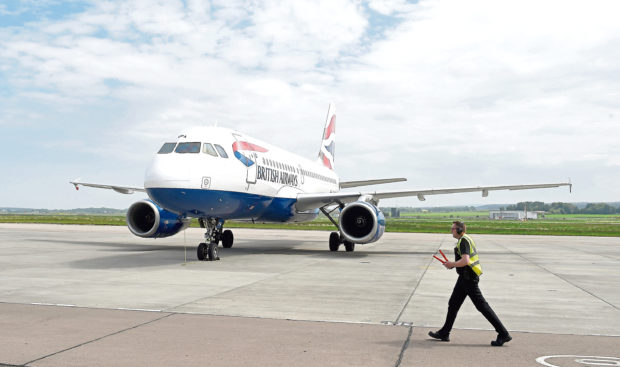The region’s two largest airports had contrasting fortunes during the first quarter of 2019, new figures show.
While the terminal in Inverness was boosted by new air links, Aberdeen International Airport (AIA) continued to be impacted by the loss of several key routes within the past year.
The Press and Journal’s analysis of Civil Aviation Authority (CAA) figures shows a 3.84% rise in passenger numbers at Inverness – to 167,526 – during the first three months of this year.
AIA was used by 625,793 “terminal and transit” passengers during the first quarter of this year, down by 7% on the figure for the same three months in 2017.
Figures obtained from AIA owner AGS Airports put Aberdeen’s latest total higher at 637,875, compared with 682,126, a year ago – a 6.5% year-on-year drop.
Highlands and Islands Airports (Hial) managing director Inglis Lyon said: “Inverness Airport plays an ever more important role in improving connectivity to and from the Highlands.
“The international connections and regular flights to hub airports such as Amsterdam, London and Dublin make it an attractive proposition for travellers.
“The overall figures show the need for continued investment and support in regional airports that offer connectivity for the communities they serve.”
AIA managing director Steve Szalay said: “We anticipated that the first quarter of 2019 would be a challenging period for the airport.
“The reduction in passenger numbers has primarily been driven at a local level by the loss of both the Gatwick and Frankfurt routes, while the wider industry continues to face tough operating conditions due to rising fuel prices and the continued uncertainty surrounding Brexit.
“Despite this, helicopter traffic has increased by an impressive 30%, which reflects the optimism we are seeing in the local economy.
“We also recently celebrated the launch of Loganair’s new London Southend service and expect to see capacity increases from existing carriers as the summer season builds.”
AIA is used by many more passengers than its Highland rival but the new figures highlight a slight narrowing of the gap.
This will fuel growing concerns in the north-east that a recent U-turn on air passenger duty (APD), which the Scottish Government had previously planned to replace with a greatly reduced air departure tax, will maintain an uneven playing field between the airports in Inverness and Aberdeen.
AIA bosses claim Inverness has a competitive advantage due to airports in the Highlands and islands being exempt from the levy.
Figures for other airports show a 1.3% year-on-year increase at Sumburgh, to 52,551 for the first three months of 2019, with Kirkwall and Stornoway both down – by 3.5% to 35,688 and by nearly 6% to 28,087 respectively.
